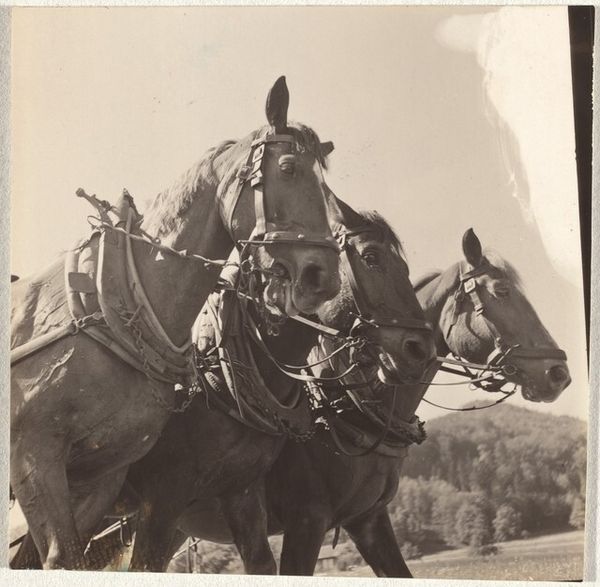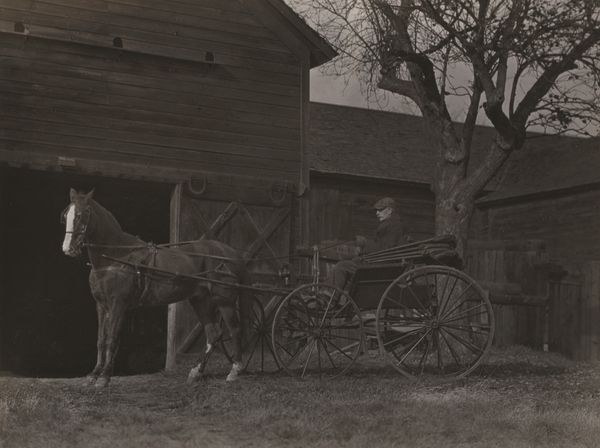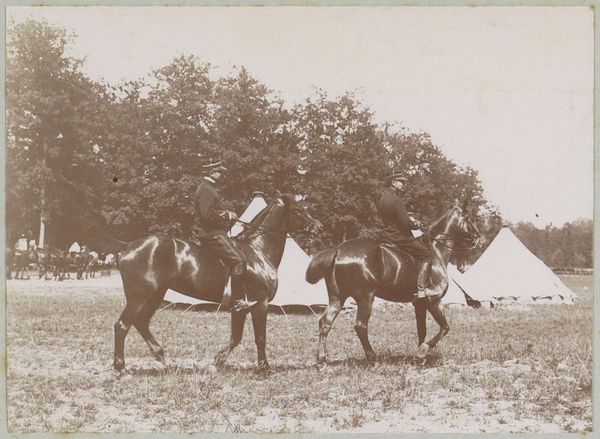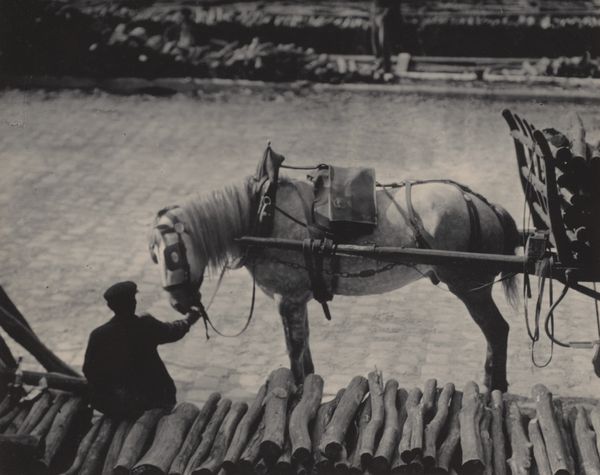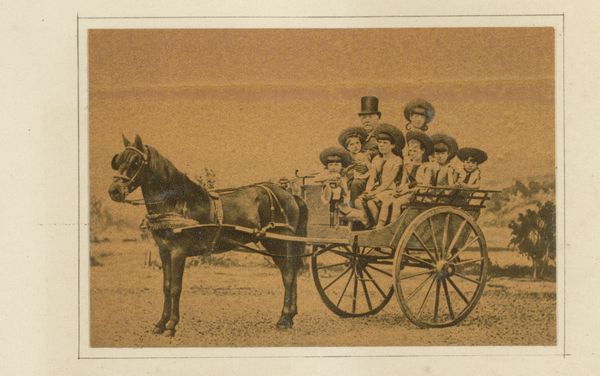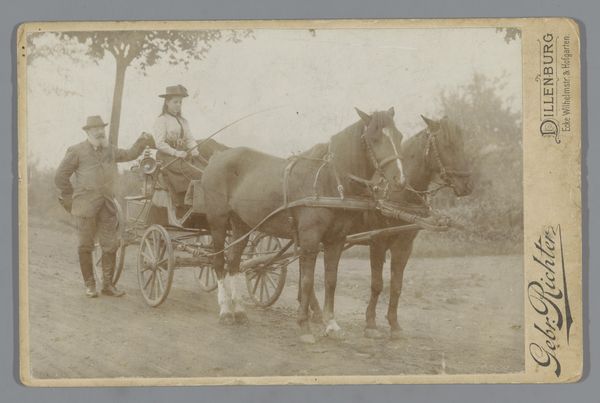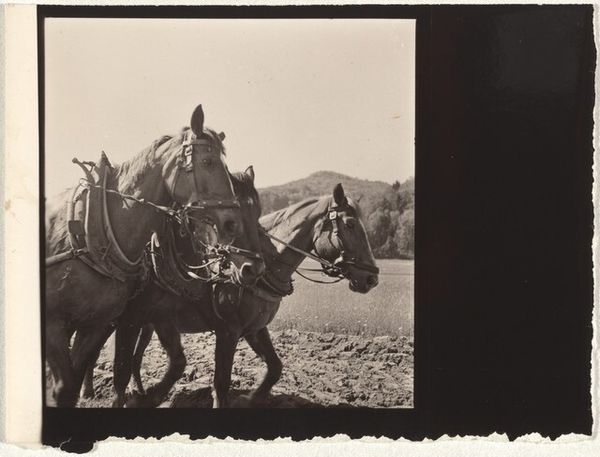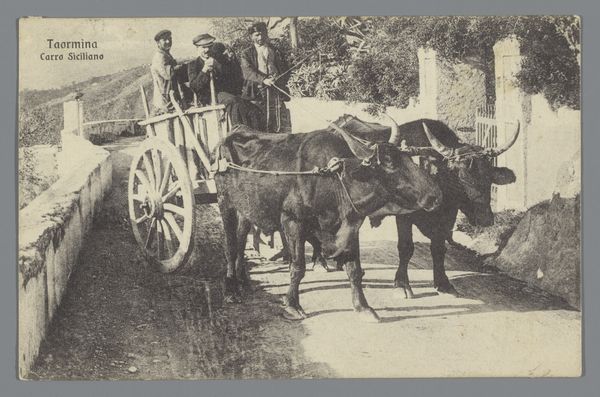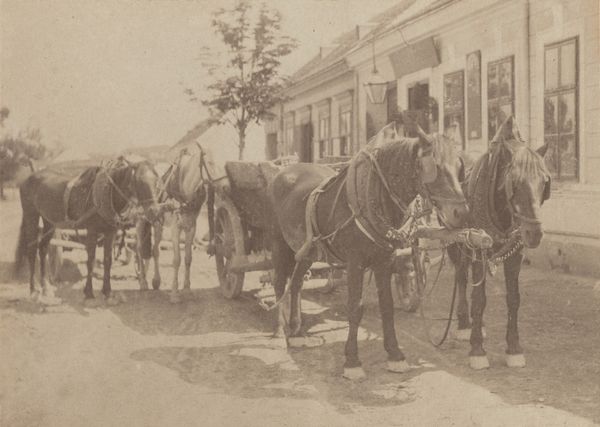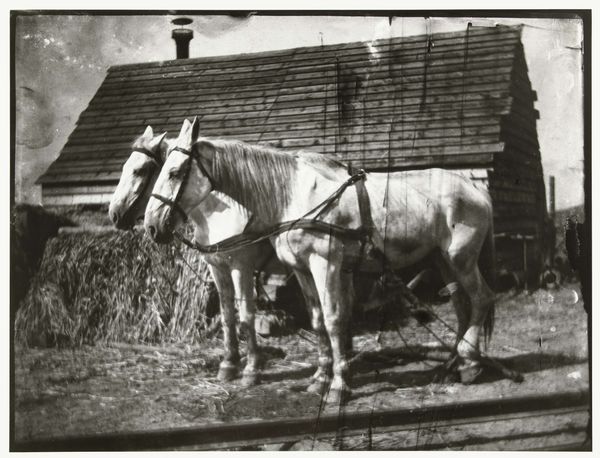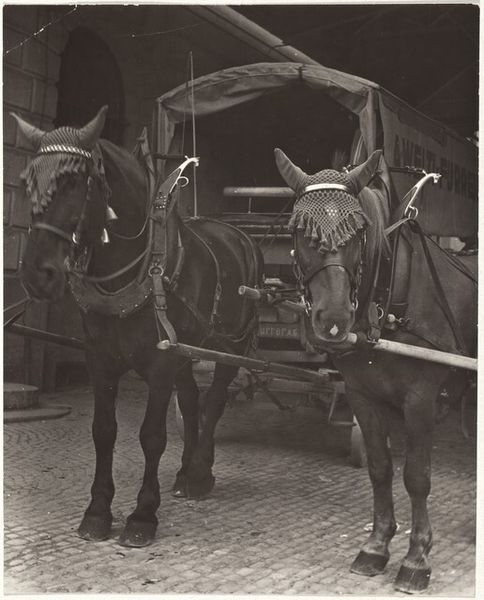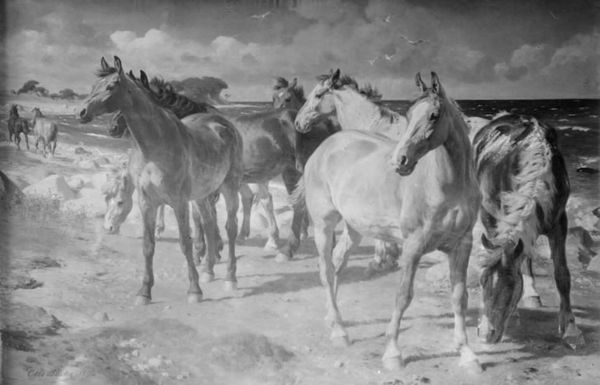
print, photography, gelatin-silver-print
#
black and white photography
#
pictorialism
# print
#
landscape
#
black and white format
#
photography
#
black and white theme
#
black and white
#
gelatin-silver-print
#
monochrome photography
#
realism
#
monochrome
Dimensions: image: 26 x 34 cm (10 1/4 x 13 3/8 in.) sheet: 28.4 x 38 cm (11 3/16 x 14 15/16 in.) mount: 63.5 x 43.7 cm (25 x 17 3/16 in.)
Copyright: National Gallery of Art: CC0 1.0
This photograph was taken by Alfred Stieglitz in the Tyrol region, using the photogravure process, a popular method for high-quality reproductions. At the turn of the 20th century, Stieglitz was a leading figure in the Photo-Secession movement, advocating for photography as a fine art. "Horses—Tirol" reflects this ambition, elevating a rural scene to the level of painting. The choice of draft horses, ready for work, speaks to the realities of agricultural labor in the Tyrol, now Austria, then part of the Austro-Hungarian Empire. The image avoids romanticizing country life, instead presenting the animals with a stark, almost industrial, aesthetic. Understanding this image involves looking at the history of photography itself, particularly its struggle for recognition within the established art world. Examining periodicals and exhibition catalogs from the period reveals how Stieglitz strategically positioned photography within broader debates about art and modernity. The meaning of art is always shaped by its historical and institutional context.
Comments
No comments
Be the first to comment and join the conversation on the ultimate creative platform.
